Google has a new headquarters in Hudson Square
This is a bit out of the neighborhood, but for those of us who’ve been watching this development from Pier 40, I thought it might be of interest. Google has just finished renovations on what was St. John’s Terminal (aka 550 Washington), the low-lying manufacturing building whose fame was as the last stop of the High Line. It has been rebuilt to house up to 6000 Googlers, starting today, in a 12-story glass and steel headquarters that preserved the old structure. And it will be called…St. John’s Terminal.
I was able to tour a few weeks ago, but cannot publish the photos so the interiors below are from the Google team.
The space is incredible — it almost makes you want to back to work. (The requirement will be three days in the office, two days flex.) The office has tons of common spaces, a couple cafeterias, a table-service restaurant (the food is all free), outdoor decks and all sorts of quirky flourishes — some that honor the history of the place, like a wall relief made of train tracks with miniature Google engines running on them. COOKFOX did the building architecture; Gensler was the lead interior architect and designer.
From the outside on Houston, you can see the old tracks of the highline — as if the concrete was just severed when that last car of frozen chickens rattled through.
I do think it’s too bad for the small businesses in Hudson Square that there’s free food in there — I can’t see many folks going out for lunch. (I sure wouldn’t.) But the Google team did say they try to incentivize Googlers to go local by hosting happy hours nearby. This is also not likely to bring in new employees from outside the area — the first 3000 will come from Google’s two temporary offices at 315 and 345 Hudson. The rest will come over time, though this space will be a draw.
Once it’s fully populated, this will be the biggest Google office next to the mothership in Mountain View, Cali. (They also said the New York office is the happiest — go figure.) There’s parking for 500 bikes, 1.5 acres of open space, a bird sanctuary on the roof where they have already spotted 40 species, tons of art and even reclaimed wood from Coney Island.
Some other interesting facts about Google’s presence in the city, anchored now here, in Chelsea at the old Port Authority Building, at Pier 57 in Hudson River Park and upstairs at the Chelsea Market:
- Google has been in the city for more than 20 years, growing to more than 14,000 full-time employees during that time.
- This space will deploys a new “neighborhood seating model” of hot desks, rather than dedicated desks.
- There will be 60 neighborhoods in all, each designed to support teams of roughly 20-50 workers
- The building has just as much communal space as neighborhood space to provide more choice for where and how to work
- There’s a central staircase that cuts diagonally throughout the building, with large landings to “welcome serendipitous social encounters”








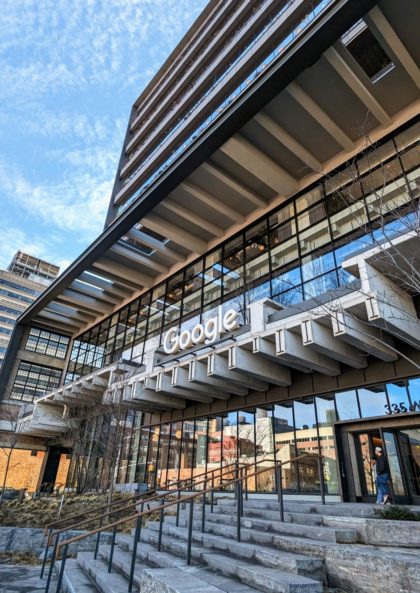
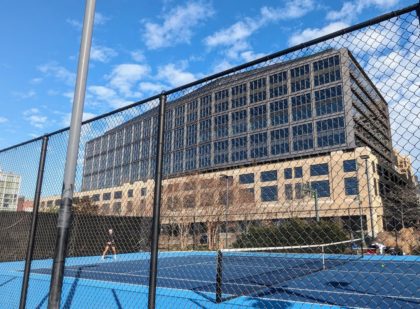
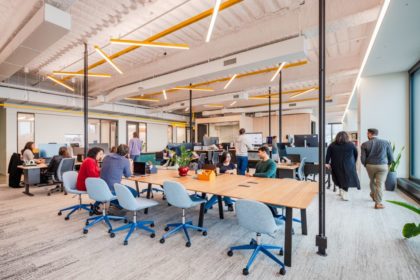
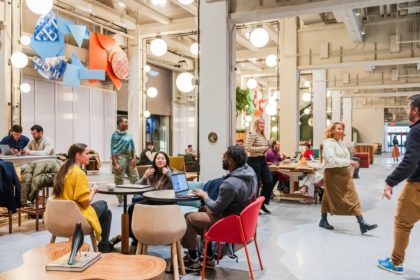

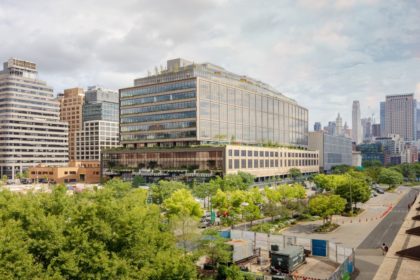









” There’s parking for 500 bikes”
How about Google provide mass transit subsidies to support and encourage MTA bus and subway?
Um, maybe because they are already paying massive real estate and corporate taxes and their employees are paying high income taxes all for the privilege for working NY?
You get what you pay for.
The City requires employers with more than 20 employees to include the transit tax benefit with payroll. https://www.nyc.gov/site/dca/about/commuter-benefits-employers.page
I don’t work for google so I can’t guarantee this but most large companies already provide their employees with benefits that can be used towards mass transit.
I think it’s really a government benefit that is managed by the employer more than something the employer provides (sadly, it also covers parking, so not exclusively a transit subsidy).
I believe it was frozen turkeys…
What a waste of money. There’s no subway stop nearby, very limited lunch options (being forced to eat at an office cafeteria no matter what company becomes old, fast), and people are moving away from going into the office to do work. This is yet another flop on Google’s long list of flops.
They’ll sell it once they can turn a profit on the real estate or realize no one comes to the office anymore.
Hi Michael, one perspective from a Googler here — the cafes are fantastic and I guarantee that Googlers love and appreciate the free delicious food options / prefer it to paying for their own lunch elsewhere. Googlers are required to come into the office at least three days a week — so far I’d say the biggest issue has actually been that so many people are in the office the cafe lines have been longer than ideal.
To illuminate (hopefully) Reademan’s comment:
Since 2009, the NY State Payroll Mobility Tax has required most businesses in the 12-county MTA service area to pay the MTA (via NYS Dept of Taxation and Finance) a portion of gross employee payrolls.
The rate was established at 34/100 of one percent. The rate for businesses in NYC was raised last summer to 6/10 of 1 percent. Thus, for every $100,000 Google pays to employees here, it also pays $600 to NY State, which sends it to the MTA.
As a thought-experiment, if each of Google’s 6,000 employees on Washington Street earns $100k per year, Google is contributing $3.6 million a year to the MTA through the Payroll Mobility Tax. Not chicken feed.